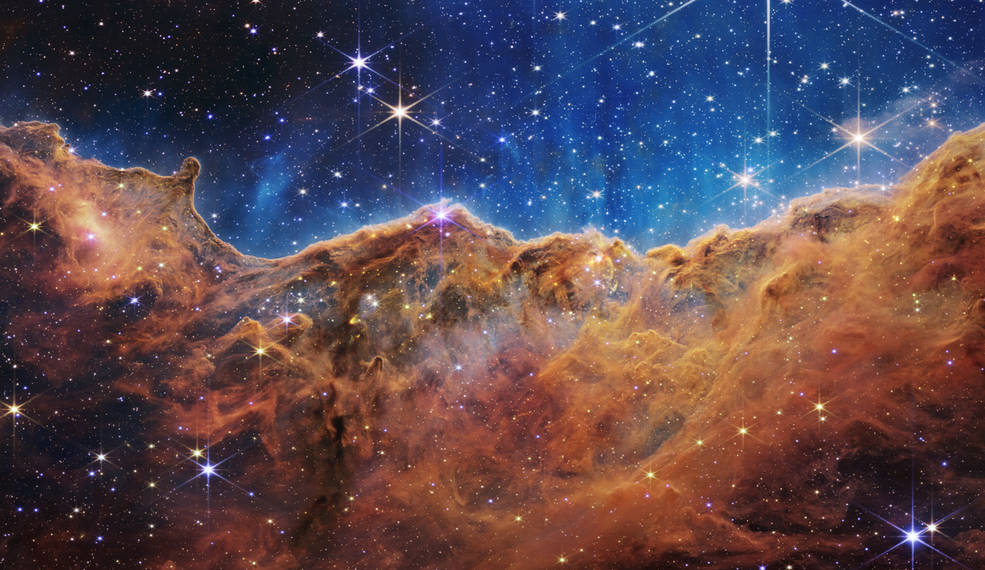
First Image from the James Webb Space Telescope. Credits: NASA, ESA, CSA, and STScI
Have you ever heard of “James Webb”? It is a brand-new space telescope launched on December 25, 2021 by NASA along with space agencies of other countries. It arrived at its destination between the Sun and Earth in January 2022 and sent its first image on July 11, 2022. And then it continually sent many high-quality images of the universe, which we cannot get with the previous one – “Hubble Space Telescope.” The colors, shapes, and their combinations of the stars in these images are so marvelous. This is why astronomers and people who are interested in stars of the sky are so excited about the James Webb space telescope. This is because the universe is unexplainably wide and, in the universe, there are so many stars that we still cannot reach out with our human technology. According to the rough calculations of some astronomers, the total stars in the whole universe are much more than all grains of sand in beaches, grounds, and mountains on earth.* The universe embraces countless stars and the sun is just a small one of the stars in the universe. We are living on the earth that belongs to the solar system of the Sun. It means that when we see ourselves in the perspective of the whole universe, we are extremely tiny like a grain of sand on the beach. Our existence is meaningless compared with the immense size of the universe. However here, there is a very important truth that we have to remember. It is the fact that God, the creator of the universe, loves us so much. God loves us who are so tiny in the universe that God created. So, God sent us his one and only Son Jesus Christ to save us. How wonderful it is! This proves our meaning and value in the universe. We are tiny in the universe, but we are huge in the love of God. I hope you will remember this great truth that you are loved by God. I hope you will also share with others God’s love.
“So we have known and believe the love that God has for us. God is love, and those who abide in love abide in God, and God abides in them.” – 1John 4:16
Pastor Jinha Choi
* Robert Krulwich, “Which Is Greater, The Number of Sand Grains On Earth or Stars In The Sky?” NPR
